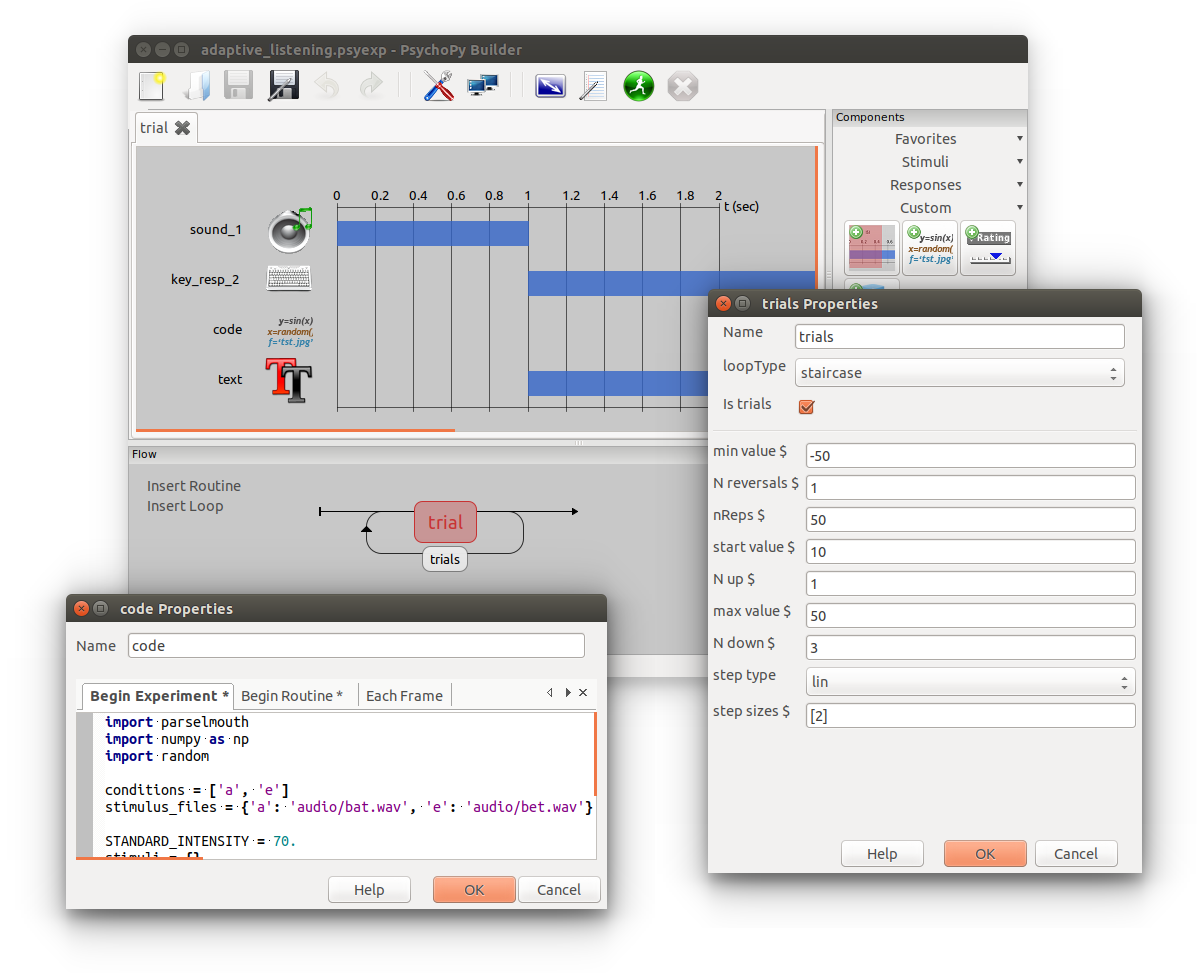

Selecting a loop type of random, sequential, or fullRandom will result in a method of constants experiment, whereby the types of trials that can occur are predetermined. This parameter can be unchecked to improve (hopefully) your data file outputs. In these cases we don’t want the data file to add an extra line with each pass around the loop.

The parameter Is trials exists because some loops are not there to indicate trials per se but a set of stimuli within a trial, or a set of blocks. they must be unique, have no punctuation or spaces (underscores are ok) and must not start with a digit. $text.Īs the column names from the input file are used in this way they must have legal variable names i.e. The column names are turned into variables (in this case text, letterColor, corrAns and congruent), these can be used to define parameters in the loop by putting a $ sign before them e.g. An example of this kind of file can be found in the Stroop demo (trialTypes.xlsx). When inserting a loop into the flow you can browse to find the file you wish to use for this.
Psychopy get loop number trial#
It is usually best to use trial information that is contained in an external file (.xlsx or. For example, trials, blocks or epochs would be good names for your loops. I would normally use a plural name, since the loop represents multiple repeats of something. they can be nested).Īs with components in Routines, the loop must be given a name, which must be unique and made up of only alpha-numeric characters (underscores are allowed). Loops can encompass one or more Routines and other loops (i.e. The start and end of a loop is set in the same way as the location of a Routine (see above). To insert a loop use the button on the left of the Flow panel, or the item in the Experiment menu of the Builder. PsychoPy can generate the next trial based on the method of constants or using an adaptive staircase.
Psychopy get loop number zip#
This form is reCAPTCHA protected (Google Privacy Policy & TOS)įill out the form above to sign up for Python Morsels, get some practice with the zip function, and start leveling-up your Python skills every week.Loops control the repetition of Routines and the choice of stimulus parameters for each. I won’t share you info with others (see the Python Morsels Privacy Policy for details). If you sign up for Python Morsels I’ll give you a Python looping exercise that right now and then I’ll send you one new Python exercise every week after that. If you’d like to get hands-on experience practicing Python every week, I have a Python skill-building service you should consider joining. You have to practice these skills if you want to actually remember them.
Psychopy get loop number code#
Write some code that uses enumerate and zip later today and then quiz yourself tomorrow on the different ways of looping in Python. So you’ve just read an article on something new, but you haven’t learned yet. You don’t learn by putting information in your head, you learn by attempting to retrieve information from your head. If you find yourself struggling to figure out the best way to loop, try using the cheat sheet above. If you need to loop over a list and you need item indexes, use enumerate.If you only need to loop over a single list just use a for-in loop.If you need to loop over multiple lists at the same time, use zip.It’s quite rare to need indexes in Python. In fact, if you find yourself reaching for enumerate, think about whether you actually need indexes at all. If you find yourself tempted to use range(len(my_list)) or a loop counter, think about whether you can reframe your problem to allow usage of zip or enumerate (or a combination of the two). For num, line in enumerate ( lines ): print ( "".


 0 kommentar(er)
0 kommentar(er)
